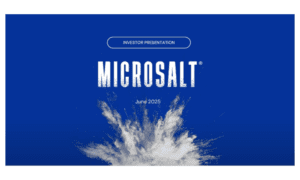Breaking a high-sodium snack habit can become harder when consumers are reluctant to try new foods.
Key takeaways:
- A total of 70% of sodium consumed by Americans comes from processed food
- Food neophobia has several contributing factors
- This condition affects consumers’ decisions to try new foods, flavors, and ingredients
- Consumers with food neophobia are less likely to try out low-sodium snacks
- Food manufacturers need to consider food neophobia in their sodium reduction efforts
Prepackaged and processed foods are things Americans should treat cautiously; around 70% of the sodium we eat daily can be found in these categories. This is enough for some people to avoid things like convenience foods and snacks to preserve their health.
The choice of some consumers to avoid low-sodium snacks coexists with a compulsion in others to avoid new things altogether, a condition known as neophobia. Dietary neophobia can be mild or severe, making people reluctant or firmly opposed to trying new foods, newly introduced flavors, or even modifications to existing recipes.
The demand for low sodium is trending strongly in 2022; however, it’s unclear how this fear of novel foods is going to affect this trend in the future. Read our guide to understand how food neophobia affects consumers’ buying decisions and how manufacturers can make lower-sodium snacks taste like familiar favorites.
Factors contributing to food neophobia
The precise causes of food neophobia are not yet fully understood; however, medical professionals recognize its link to early childhood and impact on lifelong dietary behavior. The contributing factors include:
- Biological, psychological, and environmental factors
- Genetic conditions
- Individual personality predispositions
- Imprinted opinions based on parental attitudes toward food
- When and how new products are introduced into the diet
Food neophobia typically disappears after age six, yet for some people, this early survival mechanism persists into adulthood or can appear for the first time during the geriatric years. This means that a broad range of snack consumers can be affected by neophobia, not just a single demographic group.
The National Institute for Health and Welfare presented a Finnish study warning that persistent neophobia can contribute to poorer dietary quality and increased risk factors associated with chronic conditions such as cardiovascular disease and diabetes. Adults and children willing to explore healthier food options can thus better avoid ill health later in life.
Introducing healthier snack options isn’t as simple as just cutting their sodium content and expecting consumers to buy. A South Korean study published in 2020 offers some cautionary data for snack manufacturers that foods familiar to neophobes can quickly become unfamiliar when their sodium content is reformulated, negatively affecting their intention to purchase lower-sodium products.
More about food neophobia in adults
This is arguably the most important age bracket for food manufacturers to understand, because not only are adults more capable of making their own food choices financially, but they’re also responsible for selecting what they feed their children. Anything the parent/guardian is averse to will never reach the family pantry and will affect the available choices — and ultimately the health — of everyone at home.
A Polish study published in 2021 examined food neophobia. It highlighted one of the biggest hurdles facing wider adoption of low-sodium snacks: how the taste factor “may limit the importance of health in food choice.” Food manufacturers everywhere will attest that consumers will generally stick with less-healthy salty tastes they love, rather than choosing healthier options that have traditionally been perceived as bland and bitterly flavored.
The study confirmed that food neophobes are reluctant to try new products, which includes the “healthy” alternative versions of foods they already know. Older people with an elevated level of neophobia showed even less interest in trying new recipes. One aspect of the study did offer some optimism for food manufacturers looking to include neophobic consumers.
How one neophobic trait may increase their chances of trying lower-sodium snacks
The Polish findings challenge the Finnish study by highlighting how neophobes tend to eat more healthily in general. They avoid sweets, favor fruits and vegetables, and rarely consume convenience foods, which also makes them more likely to avoid processed foods.
Lower-level neophobes chose cheaper, healthier foods despite a loss of taste. This willingness to sacrifice flavor diminished as the level of neophobia increased, but this does show that even those averse to trying new things are ready to prioritize healthier options. The same study isolated further factors contributing to food neophobia:
- Concerns over the potential harmful consequences of tasting unfamiliar things or foods associated with negative health effects
- Existing sensory preferences (meaning that neophobes don’t want tastes they don’t recognize and favor)
- A need for more knowledge about the origin and nature of new flavors
Food manufacturers must find a way to avoid alienating consumers who are reluctant or opposed to trying new dietary options for themselves or their families. The best way to help neophobes try lower-sodium snacks is to give them products that taste as good as the saltier options they already know and enjoy.
MicroSalt® may help consumers overcome neophobia
Manufacturers can take strides toward accommodating food neophobia by adding MicroSalt® to their production process. MicroSalt® is all natural, so it won’t trigger consumer fears about its origin. It also doesn’t cause any unpleasant or harmful consequences, like the bitter metallic aftertaste and other health issues associated with traditional salt alternatives like MSG (monosodium glutamate) and potassium chloride.
MicroSalt® offers individuals the chance to enjoy healthier snacks without leaving their comfort zone while also presenting parents/guardians with a powerful means of promoting positive dietary habits in minors. They can watch grown-ups try something new that has less sodium and is tasty — an example that may help reduce childhood neophobia and prevent it from carrying into adulthood.
Snack producers who care about neophobia can have a manufacturing approach to be proud of. Not only will those consumers who actively seek out the lower-sodium options have something to try, but those who actively avoid such behavior also will be able to take a painless step toward lower-sodium snacks. You can contact us via our message page or call 1-877-825-0655 to learn more about the MicroSalt® mission.




